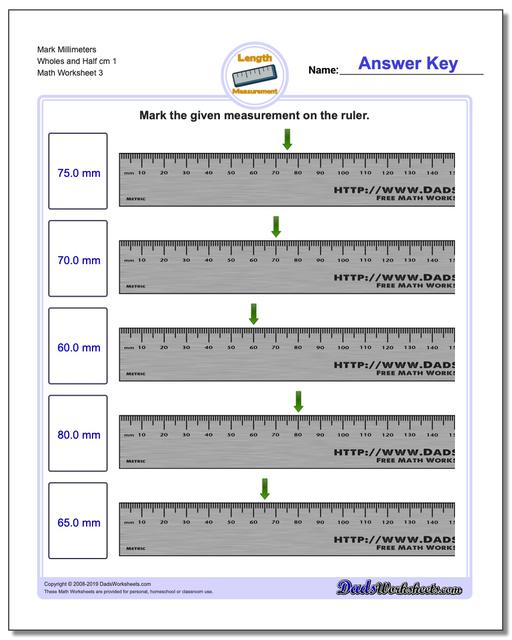
Start by using rulers marked with only whole inches, then add half inches, quarter inches, and eventually eighths or even sixteenths of an inch. (To align to the Common Core, second graders should work with whole inches, third graders should work with halves and quarter inches, and fourth and fifth graders should work with eighths of an inch.) Have the students color in the measurements (whole, half, quarter, or eighth of an inch) and label the lines of the ruler with the correct measurements. Give students printed rulers with only the lines on them. Tips for Using Coloring to Teach Measuring Inches on a Ruler: They’ll be able to visually see that the bigger spaces/ bigger fractions have the longer measurement markings on the ruler, and the smaller spaces/ smaller fractions (eighths) have the smaller measurement markings on the ruler. They will begin to notice that some measurement lines are longer, and that these lines connect to the fractions with the smaller denominators (half inches and quarter inches). In order to color the ruler, students have to focus on the measurement lines, which will help them see the patterns. There are SO MANY LINES to look at when measuring inches on a ruler! It can be really hard to know which one(s) to focus on and which ones mean which fractions. Coloring the measurement lines on a ruler will help students to make sense of all of those lines. Color-coding the different fractions of an inch will help students see the progression from one fraction to the next, and will help them internalize the sequence.ģ. That’s very confusing for kids who are just starting to understand both measurement and fractions. Coloring the inch measurements on a ruler can help students see the patterns and begin to make sense of this confusing order of fractions. Students need a strong understanding of equivalent fractions to understand the lines on the ruler when measuring inches.

When they color in half of an inch on a ruler, they can SEE why that line is the halfway mark for measuring inches.Ģ. Coloring inch measurements on rulers can help students make that connection between the area model and the linear model of fractions.

It’s hard for them to connect the idea of ½ of a cookie with a line on a ruler being ½ of an inch. When measuring inches, we have to think about fractions as a point on a line – the linear model- which can be confusing to students. The most common way for kids to think about fractions is the area model- where a space is divided into equal parts. Measuring in inches requires a different way of thinking about fractions. Why kids struggle with measuring inches (and how coloring rulers can help):ġ.


 0 kommentar(er)
0 kommentar(er)
